Skip to comments.
Photo Series: Persepolis, Iran - Capital of Persian Empire [History]
Iranian ^
| 8/27/04
| Iranian
Posted on 08/27/2004 9:42:57 PM PDT by freedom44
Cyrus the Great Cylinder,
The First Charter of Human Rights
By 546 BCE, Cyrus had defeated Croesus, the Lydian king of fabled wealth, and had secured control of the Aegean coast of Asia Minor, Armenia, and the Greek colonies along the Levant. Moving east, he took Parthia (land of the Arsacids, not to be confused with Parsa, which was to the southwest), Chorasmis, and Bactria. He besieged and captured Babylon in 539 and released the Jews who had been held captive there, thus earning his immortalization in the Book of Isaiah. When he died in 529, Cyrus's kingdom extended as far east as the Hindu Kush in present-day Afghanistan.
His successors were less successful. Cyrus's unstable son, Cambyses II, conquered Egypt but later he died in July, 522 BCE, as the result of either an accident or suicide during a revolt led by a priest, Gaumata, who usurped the throne by pretending to be Bardiya (Cambyses' brother, who had been assassinated secretly before Cambyses started out for his Egyptian campaign in 525 BCE) until overthrown in 522 BCE by a member of a lateral branch of the Achaemenid family, Darius I (also known as Darayarahush or Darius the Great). Darius attacked the Greek mainland, which had supported rebellious Greek colonies under his aegis, but as a result of his defeat at the Battle of Marathon in 490 was forced to retract the limits of the empire to Asia Minor.
The Achaemenids thereafter consolidated areas firmly under their control. It was Cyrus and Darius who, by sound and farsighted administrative planning, brilliant military maneuvering, and a humanistic worldview, established the greatness of the Achaemenids and in less than thirty years raised them from an obscure tribe to a world power.
Pasargad, Tomb of Cyrus the Great
The quality of the Achaemenids as rulers began to disintegrate, however, after the death of Darius in 486 BCE. His son and successor, Xerxes, was chiefly occupied with suppressing revolts in Egypt and Babylonia. He also attempted to conquer the Greek Peloponnesus, but encouraged by a victory at Thermopylae, he overextended his forces and suffered overwhelming defeats at Salamis and Plataea. By the time his successor, Artaxerxes I, died in 424 BCE, the imperial court was beset by factionalism among the lateral family branches, a condition that persisted until the death in 330 of the last of the Achaemenids, Darius III, at the hands of his own subjects.
The Achaemenids were enlightened despots who allowed a certain amount of regional autonomy in the form of the satrapy system. A satrapy was an administrative unit, usually organized on a geographical basis. A satrap (governor) administered the region, a general supervised military recruitment and ensured order, and a state secretary kept official records. The general and the state secretary reported directly to the central government. The twenty satrapies were linked by a 2,500-kilometer highway, the most impressive stretch being the royal road from Susa to Sardis, built by command of Darius. Relays of mounted couriers could reach the most remote areas in fifteen days. Despite the relative local independence afforded by the satrapy system however, royal inspectors, the "eyes and ears of the king," toured the empire and reported on local conditions, and the king maintained a personal bodyguard of 10,000 men, called the Immortals.
The Perspolis, Capital of Achaemenid Empire
The language in greatest use in the empire was Aramaic. Old Persian was the "official language" of the empire but was used only for inscriptions and royal proclamations.
Darius revolutionized the economy by placing it on a silver and gold coinage system. Trade was extensive, and under the Achaemenids there was an efficient infrastructure that facilitated the exchange of commodities among the far reaches of the empire. As a result of this commercial activity, Persian words for typical items of trade became prevalent throughout the Middle East and eventually entered the English language; examples are, bazaar, shawl, sash, turquoise, tiara, orange, lemon, melon, peach, spinach, and asparagus. Trade was one of the empire's main sources of revenue, along with agriculture and tribute. Other accomplishments of Darius's reign included codification of the data, a universal legal system upon which much of later Iranian law would be based, and construction of a new capital at Persepolis, where vassal states would offer their yearly tribute at the festival celebrating the spring equinox. In its art and architecture, Persepolis reflected Darius's perception of himself as the leader of conglomerates of people to whom he had given a new and single identity. The Achaemenid art and architecture found there is at once distinctive and also highly eclectic. The Achaemenids took the art forms and the cultural and religious traditions of many of the ancient Middle Eastern peoples and combined them into a single form. This Achaemenid artistic style is evident in the iconography of Persepolis, which celebrates the king and the office of the monarch.
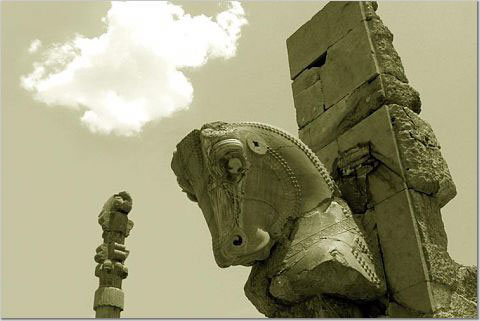

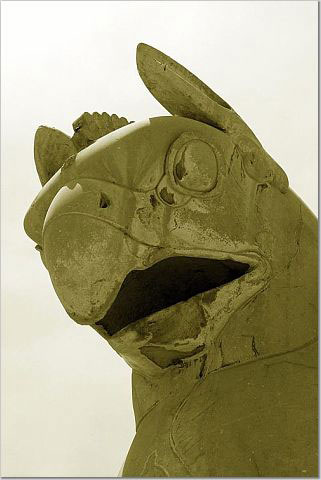


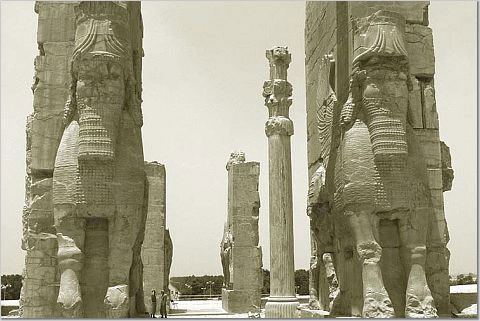
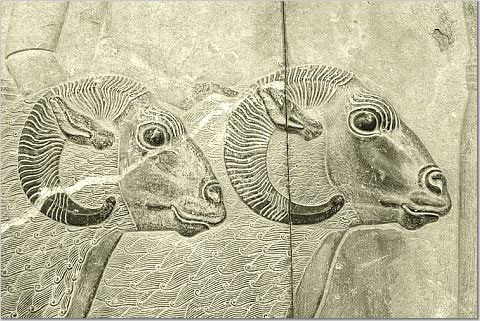
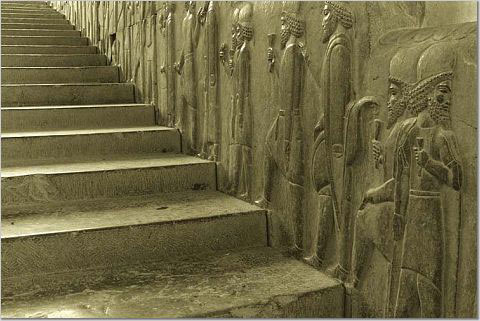

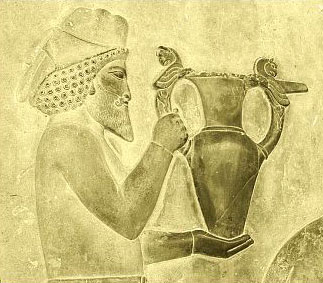
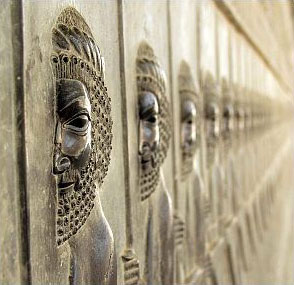
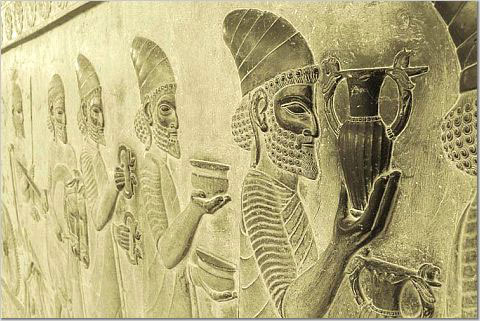
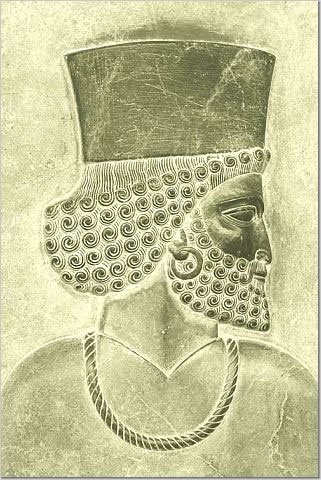
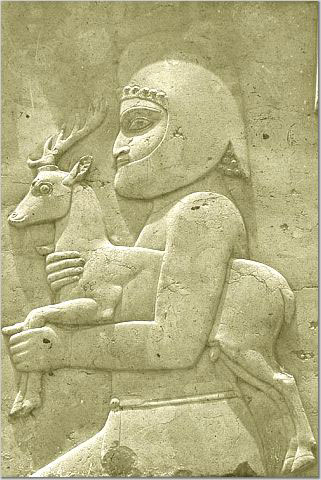
TOPICS:
KEYWORDS: achaemenid; achaemenids; aegean; aegis; afghanistan; agriculture; anshan; anthropology; aramaic; archaeology; architecture; armenia; arsacids; artaxerxes; asia; asparagus; babylon; babylonia; bactria; bardiya; cambyses; chorasmis; croesus; cyrus; darayarahush; darius; economy; egypt; egyptian; elam; empire; equinox; gaumata; ggg; godsgravesglyphs; greece; greek; greeks; hindu; history; infrastructure; inscriptions; iran; iranian; isaiah; jews; kush; levant; lydian; marathon; parsa; parthia; pasargad; peloponnesus; persepolis; persia; persian; perspolis; plataea; prophetdaniel; salamis; sardis; satrap; satrapies; satrapy; susa; thermopylae; turquoise; xerxes; zervan; zoroaster; zoroastrianism
Navigation: use the links below to view more comments.
first 1-20, 21-37 next last
1
posted on
08/27/2004 9:42:57 PM PDT
by
freedom44
To: FairOpinion; blam
2
posted on
08/27/2004 9:43:22 PM PDT
by
freedom44
To: freedom44
Thanks.
I Like seeing pics of Persepolis.
3
posted on
08/27/2004 9:45:14 PM PDT
by
nuconvert
(Everyone has a photographic memory. Some don't have film.)
To: Cyrus the Great; Persia; RunOnDiesel; F14 Pilot; DoctorZIn; faludeh_shirazi; democracy; ...
4
posted on
08/27/2004 9:46:32 PM PDT
by
freedom44
To: freedom44
Someone should remind the Iranians that the builders weren't muslim... ;-)
To: SunkenCiv
6
posted on
08/27/2004 9:49:09 PM PDT
by
FairOpinion
(FIGHT TERRORISM! VOTE BUSH/CHENEY 2004.)
To: coconutt2000
Yes. Zoroastrian glory for several hundred years; most all of Iran's glory came before the invasion of Islam.
7
posted on
08/27/2004 9:49:16 PM PDT
by
freedom44
To: freedom44
Very interesting. Terrific pictures too.
It sure would be nice to turn Iran and Iraq into peaceful Democratic countries, so we could go visit all these sites.
8
posted on
08/27/2004 9:50:11 PM PDT
by
FairOpinion
(FIGHT TERRORISM! VOTE BUSH/CHENEY 2004.)
To: FairOpinion
Persepolis and Persia is in Iran, not Iraq. Although Cyrus the Great once invaded Babylon and released several thousand slaves. Also, Babylon has a beautiful separate history and heritage.
9
posted on
08/27/2004 9:52:31 PM PDT
by
freedom44
To: freedom44
I know it's in Iran. I said Iran and Iraq -- both places have some great history and archeology.
10
posted on
08/27/2004 9:53:57 PM PDT
by
FairOpinion
(FIGHT TERRORISM! VOTE BUSH/CHENEY 2004.)
To: FairOpinion; Cyrus the Great
Iran's glory: Zoroastrianism. King of Persia glorified 32 times in the Holy Bible.
http://www.christiananswers.net/dictionary/cyrus.html
Cyrus
This was the name of the celebrated "King of Persia" (Elam) who was conqueror of Babylon, and issued the decree of liberation to the Jews (Ezra 1:1, 2). He was the son of Cambyses, the prince of Persia, and was born about B.C. 599. In the year B.C. 559 he became king of Persia, the kingdom of Media being added to it partly by conquest. Cyrus was a great military leader, bent on universal conquest. Babylon fell before his army (B.C. 538) on the night of Belshazzar's feast (Dan. 5:30), and then the ancient dominion of Assyria was also added to his empire (cf., "Go up, O Elam", Isa.21:2).
Hitherto the great kings of the earth had only oppressed the Jews. Cyrus was to them as a "shepherd" (Isa. 44:28; 45:1). God employed him in doing service to his ancient people. He may posibly have gained, through contact with the Jews, some knowledge of their religion.
The "first year of Cyrus" (Ezra 1:1) is not the year of his elevation to power over the Medes, nor over the Persians, nor the year of the fall of Babylon, but the year succeeding the two years during which "Darius the Mede" was viceroy in Babylon after its fall. At this time only (B.C. 536) Cyrus became actual king over Palestine, which became a part of his Babylonian empire. The edict of Cyrus for the rebuilding of Jerusalem marked a great epoch in the history of the Jewish people (2 Chr. 36:22, 23; Ezra 1:1-4; 4:3; 5:13-17; 6:3-5).
To: FairOpinion
Want to learn about Zoroastrianism?
http://tenets.zoroastrianism.com/zor33.html
My ancestors, the Zoroastrians of Iran (pre-Islamic) were members of the Indo-European family known as the Aryans. They called themselves Zoroastrians because they believed in the teachings of the first Aryan prophet, Zarathushtra.
Zarathushtra was the first prophet to preach a monotheistic religion, and He was born in Iran about 8000 years BC. He revealed that there was only one God, Ahura Mazda and that life in the physical world was a battle between good and evil. As per man's actions, he would either cross the "Chinvato Peretu" or the sword bridge after death, and reach Heaven, or fall from it and go to the abode of the evil one. In the final days there would be a battle between good and evil, evil would be vanquished and the world would be purified by a bath of molten metal. Mazda would then judge the world, resurrecting the dead and His Kingdom would be established on earth.
Zarathushtra's songs are called the "Gathas" which linguistically may be older than the Indian Vedic scriptures. The Gathas are written in an ancient Avestan dialect. This is a sister language to Sanskrit of India, and Greek and Latin of the West. The reason is, the common ancestors (common to the ancient Iranians, Ancient Indians, Greeks, and Europeans) were one and the same - the Indo-European or Aryan peoples.
Surprisingly, many so-called Christian concepts actually were derived from Zoroastrian Aryan ideas which thrived in Iran for thousands of years until the Arab invasion of Iran around 1300 years ago. Concepts such as heaven and hell, God and the evil adversary ahriman, the coming of the Saviour or Saoshyant born of a virgin, the end-time purge of the world by Fire followed by the resurrection of the dead (Ristakhiz), the making fresh of the world (Frashogard) and the final battle between good and evil leading to the final defeat of evil. These beliefs filtered down to Judaism during the reign of King Khushru (Cyrus) of Iran.
Although proud to be Aryans, Zoroastrians also believe that all races in the world are created by God and are equal - a true sign of the real ancient Aryan's nobility and tolerance. Cyrus, King of Iran who was an Aryan rebuilt the temple of the Jews after freeing the Jews from Babylon - for this, he is still remembered by the Jews and called the "Anointed of the Lord" in the Bible. The Jews still celebrate that act of the true Aryans in a festival. Many Jews then stayed in Iran under Cyrus and his successors such as Darayus, as equal subjects under the King. Books of the Bible written after this stay have taken all these Zoroastrian concepts, from there they came to Christianity and other religions. There are scholars who consider Zoroastrianism as such to be the mother religion of the present day world's faiths.
In fact the edict of Cyrus proclaiming equality for all his subjects is enshrined in the United Nations today. The original Aryans were realy multicultural and tolerant of all races! So, it is probable that the Jews were influenced by the Zoroastrian faith of Iran in those days - and took on the concepts of heaven/hell, God's evil adversary, the resurrection and the final purification of the world - the virgin birth, the Saviour etc., all these concepts being Zoroastrian. There are other similarities too - certain purificatory observances such as the impurity of menstruation etc. are found in both faiths. Indeed, the very idea of the Messiah, and the very concept of Jesus could be Zoroastrian in origin.
Zarathushtra's religion was the prominent one in Iran until the conquest by the Arabs, around 1300 years ago, who converted Iran to Islam. To preserve the Zoroastrian faith, this most ancient of faiths, indeed the "mother" faith of all mankind, a band of the Zarathushtrians sailed by boat to India about 1300 years ago, and settled in India where they were called the Parsees (from "Pars" ie. Iran). I am a descendant of these migrants. Rare as diamonds are, we number 100,000 or so in the world today.
We keep the holy FIRE in our temple as the symbol of Ahura Mazda, and our priests feed the fire with sandalwood and cedar and intone the ancient sacred Mathras (verses of praise) in the ancient Aryan Avestan language. The Mathric incantations have incredible divine potent power, a power used to fight evil. We also revere the elements of God such as water, earth, wind, and the creations of God such as the Sun, moon and stars. We wear the sacred Aryan girdle or the "Aiwiyaonghanem" around our waists, a sign of our ancient Aryan lineage and religion, and the white "Sudreh" as a garment.
My real name is "Pourashpa", an Avestan Indo-European name meaning "Owner of Grey Horses", horses signifying spiritual wisdom. As per the ancient custom, it should be always mentioned with my father's name ie. Pourashpa Puthra (son of) Hormuzd (my father's name). The ancient Avestan Pourashpa does have a mystical meaning because we believe the entire language itself, and its pronunciation (our ancient prayers the Gathas are in Avestan, these are the songs of Zarathushtra) itself has a powerful mystical effect in the fight against evil.
The Link between Zoroastrian & Germanic mythology:
Recently I read a book on "Runes" by D. Jason Cooper. In this book, Cooper suggests a close link between Pre-christian Germanic mythology and Zoroastrian mythology. He says that the Germanic peoples had travelled from Iran and India, and had kept some myths they had known before travelling, aspects of Indo-European thought seen in the Rig-Veda and the Gathas. As examples: German mythology says the doom of the world will come after 3 winters with no summer in between, then the fires of "Muspell" would sweep the world. In Zoroastrian mythology the final battle between good and evil will take place after 3 years of winter with no summer in between. Then a river of molten metal would sweep the earth, purifying the righteous as a bath of warm milk and scalding the evil, purifying them too.
Also, in both mythologies, two necessarily antagonistic forces (good and evil) and their contention has brought the material universe into being, in both cases a sacred cow is involved, in both cases the death of a sexless giant is involved (the first man, GayoMaretan in Zoroastianism). In both cases, the forces of good and evil will contend till the final days. Evil or chaotic forces are contained underground in both cases. Nails are considered a help to evil forces in both. (Loki and his ship of nails of dead men). Cooper also says that Germanic mythology as we now have it is a late corruption of the original, Ragnarok was originally a purification after which the world was restored to its pristine state. Only later it became the destruction of all Gods but a few. Not so in the Zoroastrian case.
I was once surprised to read a book by a German author, written in the early 1900s, on German shepherd dogs which at the very outset quoted the "Vendidad", particularly passages in this ancient book which described the creation of the faithful Dog by Ahura Mazda (God) Himself. That showed the popularity of the Vendidad in Germany to me at that time. I also like to mention here that Edgar Cayce the "sleeping" prophet of the USA, the famous clairvoyant once mentioned that Iran was the ancient site of the "Garden of Eden". A most interesting thing to say, perhaps indicating the very ancient culture of old Iran. Please write to me if you have any questions on this ancient religion of the Aryans, called Zoroastrianism.
Your friend,
Porus Homi Havewala.
To: freedom44; blam
Blam, you will like this thread.
13
posted on
08/27/2004 10:12:42 PM PDT
by
piasa
(Attitude adjustments offered here free of charge.)
To: McGavin999; sionnsar; AdmSmith; dixiechick2000; onyx; Pro-Bush; Valin; Pan_Yans Wife; seamole; ...
14
posted on
08/27/2004 10:19:32 PM PDT
by
F14 Pilot
(Imagine...)
To: freedom44
Bump to an interesting culture and history --- which is being held captive in it's "Dark Ages" but hopefully will soon be released and regain it's freedom.
15
posted on
08/27/2004 10:22:32 PM PDT
by
FITZ
To: FITZ
Iran must destroy Arabic Islamist influence to return to it's glory.
To: freedom44
Bump for later. Thanks. :O)
To: freedom44; nuconvert; RaceBannon; FITZ
The mullahs took the reliefs and stones out of our BELOVED Persepolis to sell to foreign collectioners and museums.
I was there in March 2004 and when I compared it with older pictures, I saw lots of damages to the ancient site.
It really sadened me how the regime in Iran is busy destroying our heritage.
18
posted on
08/27/2004 10:45:15 PM PDT
by
Khashayar
(Learn Geography!)
To: freedom44; nuconvert; McGavin999; RaceBannon; onyx; Grampa Dave; The Scourge of Yazid; ...
The pictures I took in the Iranian Ancient sites in my last visit; Hope you enjoy...

King Ardeshir Tomb in Persepolis

Naghshe Rostam site, 8 miles away from Persepolis
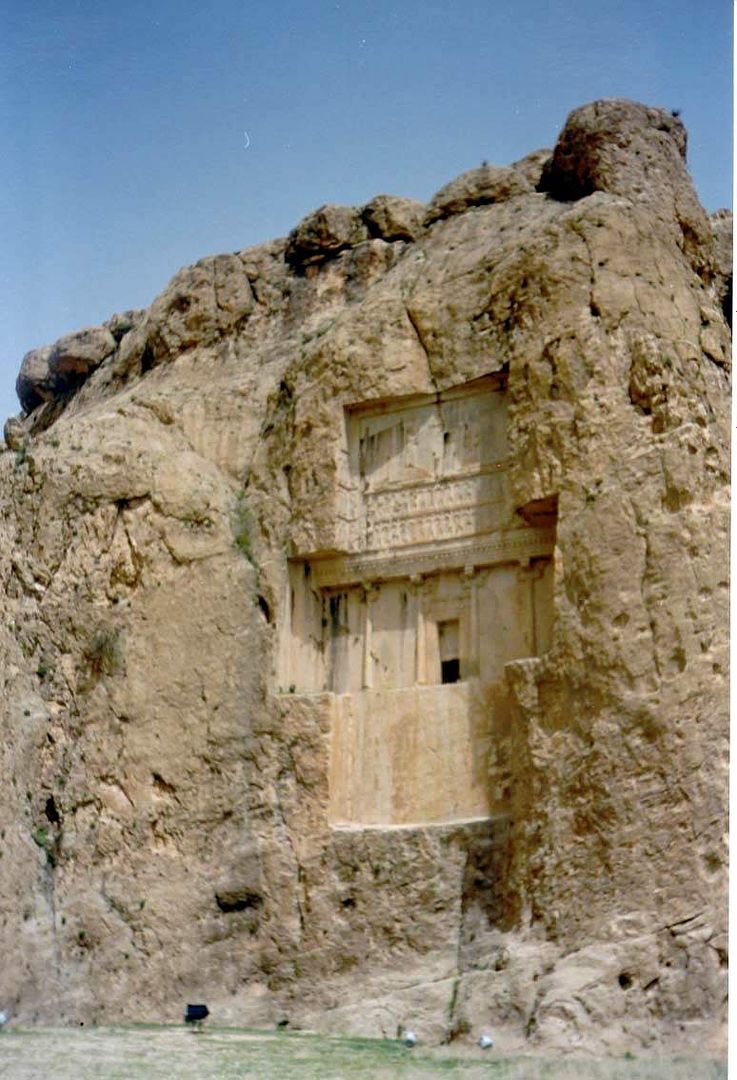
Xerxes (khashayar Shah) tomb in Naghshe Rostam site, XERXES is Khashayar Shah in latin language
19
posted on
08/27/2004 10:54:10 PM PDT
by
Khashayar
(Learn Geography!)
To: Khashayar
It's kind of like Europe during the Dark Ages --- books and great art were destroyed, a lot of the history was lost but not everything --- some books were saved and some of the cultural artifacts were preserved through all those years.
20
posted on
08/27/2004 11:01:04 PM PDT
by
FITZ
Navigation: use the links below to view more comments.
first 1-20, 21-37 next last
Disclaimer:
Opinions posted on Free Republic are those of the individual
posters and do not necessarily represent the opinion of Free Republic or its
management. All materials posted herein are protected by copyright law and the
exemption for fair use of copyrighted works.
FreeRepublic.com is powered by software copyright 2000-2008 John Robinson
















